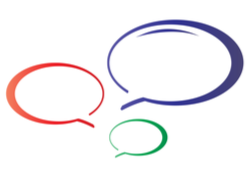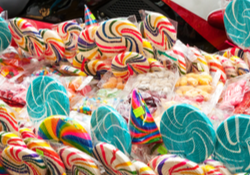by Sunnie Whipple, former co-chair of the LACDMH Cultural Competency Committee (2018-2021)
Have you ever wondered?
- A turkey’s head is bald without feathers, so why don’t we call it a “Bald Turkey;” compared to an eagle whose head is covered with feathers, that gets called a “Bald Eagle?” This makes no sense.
- Everyone is thankful, except the turkey who gets eaten. So, thankfulness is dependent on whose stomach gets filled—although the turkey’s stomach gets filled with stuffing, so it can’t be thankful cause it’s dead.
- My grandson is part of a new generation getting his culture instilled in him through ceremonies like name-giving at the Sundance, or sitting with a drum group at powwows, which is consistent with his love for the turkey drumstick.
- Why are we not more thankful to the Creator for providing? We often just think about the food.
- Indians who celebrated Thanksgiving…I’m one of them, but not necessarily like others think. And I don’t mind being called “an Indian.” I’ve been called an Indian all my life. I don’t mind celebrating Thanksgiving either. The food is good and so is getting together with family and friends.
So How did I celebrate Thanksgiving at home as a boy? Let me tell you.
As a boy, Thanksgiving wasn’t a big celebration. The attitude of the dominant culture was primarily negative toward us Native Americans (still called Indians back then), and we were more interested in keeping our family and community alive. In an era where reservation settlement, forced relocation, assimilation efforts, termination goals, and everything was “cowboys versus Indians,” (and the Indians usually lost), there wasn’t that much to be thankful for other than the presence of family and a deeper understanding that the Creator was still looking out for us. We never had a problem being thankful to God. We were thankful to survive the oppressions we faced and for having each other. There weren’t that many jobs on the reservation so the economy was bad and most families had to depend on food commodities. Along with an introduction to alcohol, which affected the well-being of many families, we went from being independent hunters and gathers, to being dependent on the federal government. So, we just didn’t get very connected with the history or the celebration of Thanksgiving.
Our exposure to Thanksgiving was primarily in school, where White teachers taught a bunch of us Indians about the pilgrims, eating turkey, and creating special art projects around the event. The imagery was a bit strange to us, as was the overall expectation to take it home and hang it onto our wall or window. This resulted in strange looks from our parents who didn’t really care to hang it up—especially on seeing the strange caricature of the Indian. Living with wood stoves that warmed our house, it had more of a practical use as a fire starter.
Thanksgiving as a holiday was our focus. For us, we saw it as another opportunity to get out of school and play and enjoy good food and spend time with friends and family. It was hard to get together with extended family back then, as many didn’t have vehicles. Those who had cars would pick up others, while some hitched a ride with other community members. Spending time together, catching up, and making sure everyone got fed was important. There was always a new grandchild to meet, or a story to tell of some adventure or challenge. For instance, my sister would buy 2 turkeys and a ham and invite the whole family over, and they would eat, talk, and laugh. There was always a lot of laughter, joking and personal stories. After the food, the kids would go out to play sports. Originally, we favored baseball, then basketball, and if it snowed it was football, though there were few takers for that. Watching football on television did not occur until much later when TVs became more affordable.
It was sometime in the 90s that tribes started to give turkeys as part of the food distribution commodity program. Ever since tribes were relocated and placed on reservations, the federal government had to issue rations that tribes became dependent on, and it forced us to change our diet and be creative in how we used these foods. It helped a lot of our families survive, but we also gained weight and health problems because the foods were mostly processed and really limited. Thankfully, there are more food varieties available these days, as other options like food stamps now exist.
Our table setting didn’t look like the typical Thanksgiving table you see in the pictures. Along with the turkey, we’d have instant mashed potatoes, green beans, and baked bread from the flour and the food commodities we received. That was our typical meal, along with black tea as our main drink. Those that could afford it also bought soda and maybe paper plates and a checkered white and red tablecloth. Over time, as more food choices became available, other dishes and dessert became part of our table meal, but the basics remained the same.
Today on the reservation, as well as in the city, it’s still mostly the same. We still gather as family and community members to feed everyone with a feast that includes turkey, ham, various vegetables, mashed potatoes, yams and cranberries. More traditional foods like corn, beans, and squash are often included, as well as the more recent “traditional food” like frybread. There is usually a lot of food, with deserts that include pie and cookies. Most of the Native American organizations in the city generally have their own Thanksgiving gathering and invite community members. Again, these functions usually involve donations from food banks and turkeys from the casino, and several potluck items made by community members.
The way Thanksgiving is celebrated in the city is usually bigger. However, focusing on the history of Thanksgiving is still not important, except for some activists who have tried to decolonize its meaning, and others who refuse to celebrate it because of the genocide Native Americans experienced. All gatherings depend on how each family wants to celebrate. A traditional Thanksgiving dinner for me can just as easily be two bologna sandwiches, Lay’s potatoes chips, a mini pie and Mountain Dew—Oh, and football. Watching football, along with Black Friday shopping has become an extension to many celebrations.
In community gatherings, like some of the Health organizations, there is usually a big meal with some talk and maybe a drum or flute song and a game of Bingo. There is also a religious or spiritual focus as churches serving the Native American community begin with a thanksgiving message, followed by a feast. The leftovers are usually distributed among the people. To do something good in our community is the goal. Making sure elders have extra food, families with children have more provisions, and single students or youth have plenty to get them through another few days. Everyone is looked after, including guests and visitors.
There is more written up on the Internet nowadays, about what other Native Americans think about Thanksgiving, and why it’s seen as a negative celebration by tribes across North America. It’s primarily because of all the historical atrocities and the doctrine of discovery. That is just something we can’t celebrate. My recommendation is for more people to check out some of the articles written by other Indians, to learn more about what they think, and why Thanksgiving creates a negative feeling for many of our people.
Those are just some of my experiences and thoughts. Thank you for letting me share them.
Note: this story is published post-humously, see related article “Remembering Sunnie Whipple” by Bernice Mascher





